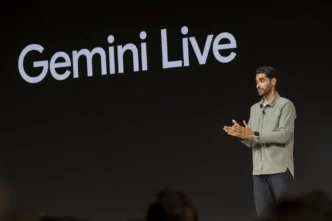Microsoft recently unveiled a browser-based, AI-generated demo of Quake II, offering a short but playable glimpse of the iconic game through the lens of its Copilot AI platform. The experimental release, while intriguing, isn’t aiming to compete with traditional gameplay—Microsoft itself admits it comes with significant “limitations.”
Players can test the AI-powered experience directly in their browsers. You get to move through a single level of Quake II using keyboard controls, but the fun only lasts a few minutes before hitting a time limit. Unlike the original game, this isn’t a polished product—it’s more of a proof of concept.
In a detailed blog post, Microsoft researchers explained how they used their Muse family of AI models to recreate the level. According to the post, users can “interact with the model through keyboard/controller actions and see the effects of your actions immediately, essentially allowing you to play inside the model.” The AI model was trained specifically on a level from Quake II, which Microsoft owns after acquiring ZeniMax.
At first, the results were surprisingly promising. “We could wander around, move the camera, jump, crouch, shoot, and even blow-up barrels similar to the original game,” the researchers wrote. But they were quick to clarify that this was never meant to be a full game experience—it’s a research experiment, or in their words, “playing the model as opposed to playing the game.”
And that distinction matters. The AI-generated Quake II demo shows several noticeable limitations. Enemies look blurry, health and damage stats often display incorrect values, and most notably, the AI model has poor object permanence. If an object is out of view for more than 0.9 seconds, it might vanish or change when you look back.
Interestingly, the researchers noted that these quirks might add some chaotic charm. For example, looking at the floor and back up can sometimes make enemies disappear or reappear. In other cases, looking up at the sky and then down again might teleport you across the map.
Not everyone is on board with this experimental direction. Game designer and writer Austin Walker criticized the demo in a gameplay video where he struggled to escape a dark room. He also challenged Microsoft Gaming CEO Phil Spencer’s recent comments about AI helping preserve classic games by making them platform-agnostic.
Walker argued that simply replicating visual elements of a game isn’t enough. “The internal workings of games like Quake—code, design, 3D art, audio—produce specific cases of play, including surprising edge cases,” he wrote. “That is a big part of what makes games good.” Without recreating these essential components, you miss out on what truly defines the gameplay.
While Microsoft’s AI-generated Quake II demo might not replace traditional gaming experiences anytime soon, it sparks a broader discussion about the role of generative AI in game development and preservation. For now, it’s an experimental glimpse into what could be possible—but it’s far from a finished product.













